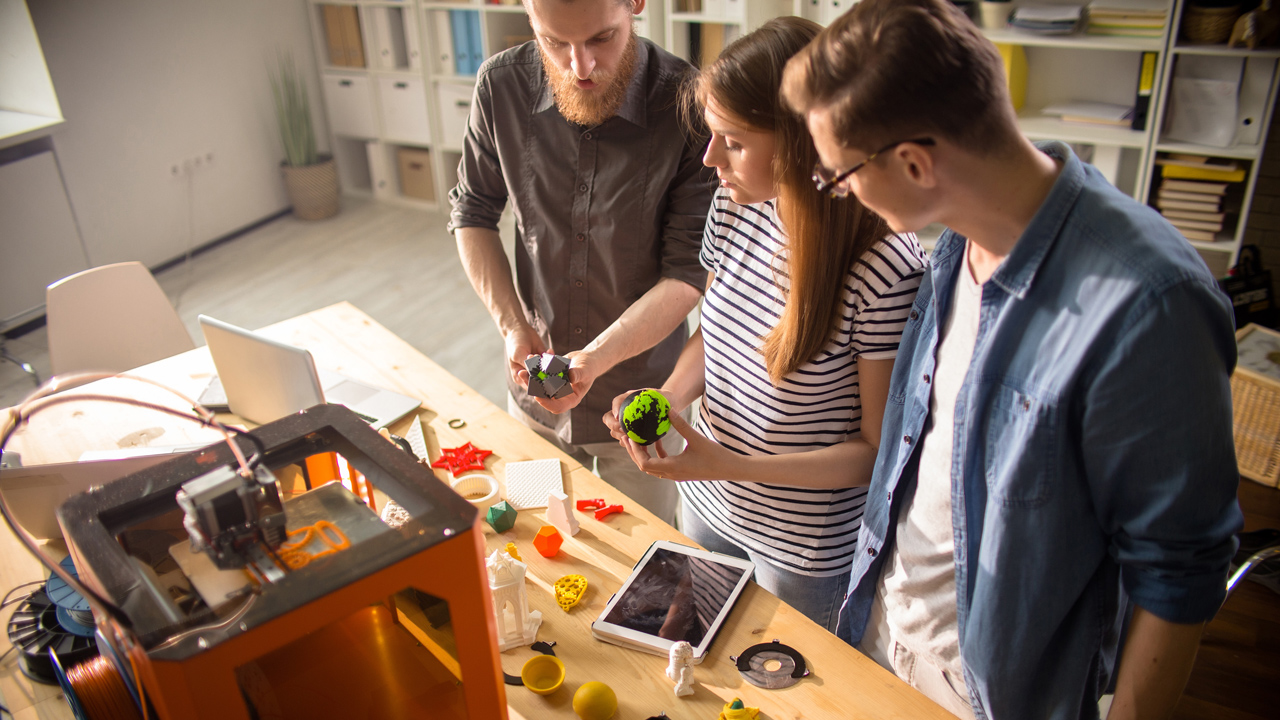3D Design
The 4 steps from prototype to final product
Turning an idea into a product, and ultimately into a fully-fledged business, begins with prototyping. Yet prototyping is only one phase of the overall product development journey, so budding entrepreneurs should consider these 4 aspects when starting their prototyping journey.

It’s no secret that the startup ecosystem is thriving – a record 5.4 million businesses were set up in the USA alone in 2021. More people than ever are becoming an inventor by making products and setting up businesses.
1. Planning your first business venture
Lots of people know nothing about business planning when they become an inventor for the first time – this is totally normal. Product development should be accessible to everybody, regardless of their career background or expertise.
When you have a great idea for a product, there are a few simple steps to follow to make your business idea a reality. You should do some research, investigating the existing market of your product, what the customer base looks like, and how your product idea could fit into that market. You can then distil those findings into a short pre-business plan, to better understand your project’s potential and aims before investing time, money, and energy into a longer-term project.
2. Navigating legal frameworks to protect your idea
As a new inventor, you may want to acquire legal protections for your idea. Though, in the early stages of your project, you never know how much your product is going to change. Therefore, it is wise to wait before you go ahead with full legal protections, to save time and money.
There are nevertheless some small steps that can be taken to ensure proof of ownership of an idea in the early stages. These include:
- Sending an email to yourself which details your idea.
- Sketching your idea and including the date that you drew it.
- Saving your idea on a digital drive.
These steps may seem minor but can be invaluable later down the line.

3. Marketing your product
Much like a business plan, you do not need a full-scale marketing plan at the start of your product development journey. It is always best to start small, carrying out comprehensive research and testing out strategies as you go.
You should consider making a basic landing page for your product prototype, so that you can update users on your progress and launch pre-orders for your product. You can then link to this landing page on social media, to introduce new potential customers to your idea and receive feedback from them. The earlier you test strategies like this, the more time you will have to refine them and prepare to go to market.
4. Moving to manufacturing
When you finish making your first product prototype, it doesn’t mean that the prototype is always ready for the manufacturing process. While you started the design process and continued with a 3D printing prototype, now it is time to make a final prototype, which will need some revisions to look as good as possible for the real world. Following these revisions, you will need to take a Design for Manufacturing (DFM) to your chosen manufacturer. LastBasic can help you with this; the DFM service involves experts liaising with manufacturers on your behalf to get the best deal for you.
In any case, you should carry out careful due diligence before entering a manufacturing partnership, ensuring that the manufacturer’s proposition aligns with your requirements and that they have positive reviews. Once you are working with the manufacturer, it’s important to build a strong relationship, so that you get what you deserve from the process.

Are you ready to become an inventor?
To hear more about how you can become an inventor, including tips and tricks to support you throughout the entrepreneurial journey, download our whitepaper Beyond the Prototype: Moving from a basic idea to a fully-fledged product.
Getting your invention made is more affordable than ever
Our sharing economy model makes us very competitive with prices being up to 80% lower than others.
View Pricing
Getting started couldn't be easier
All you have to do is;
Select your package, complete and submit your idea brief for validation, make the payment and begin your onboarding through to a working prototype.
It's that simple!